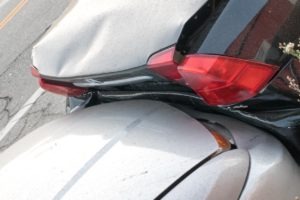How Arizona’s Comparative Negligence Laws Work
Comparative negligence (also known as comparative fault) affects a wide array of cases, especially regarding personal injuries, auto accidents, premises liability, and similar contests of fault. Every state has its own fault laws, but Arizona’s comparative negligence laws are especially generous, as they adhere to a concept known as pure comparative negligence.
Comparative Negligence in Practice
So what is Arizona’s definition of comparative negligence? Simply put, it means that fault affects, but doesn’t negate, a claimant’s ability to be compensated for damages. Negligence assignment can either be comparative or contributory in nature—the prior is used in most states, and results in a system where a defendant and claimant’s level of fault are compared to one another, usually via a percentage. Contributory negligence, conversely, is simpler; if a defendant is found to have been partially negligent, they’re completely barred from receiving compensation.
Comparative negligence can further be “pure” or “modified,” which is where Arizona’s specific rulings start to come into play. Many states use a modified comparative negligence system, which cuts off compensation for claimants at 50 or 51 percent fault (depending on the state). Arizona, on the other hand, uses pure comparative negligence, which means there isn’t any cutoff point, even if someone is 95 percent or more at fault. Once fault is determined, their damages are distributed or reduced proportionately.
Let’s look at a simple example. A driver runs a red light and hits a car, seriously injuring the other driver and totaling their vehicle. The victim is eligible for compensation, and undoubtedly, most of the fault lies with the motorist who ran the red light. However, while investigating, it becomes apparent that the victim wasn’t wearing their seatbelt and was texting. If their lack of a seatbelt clearly contributed to their injuries, they’ll be assigned a certain level of fault for those damages—let’s say 30 percent for the sake of this example. Additionally, though relatively minor, the distraction the driver was partaking in likely reduced their reaction time and ability to avoid the accident, placing them at 10 percent fault for the collision on the whole. When they file for compensation, the other driver will only have to compensate 70 percent of their medical costs, and 90 percent of their vehicle repair fees; proportionally, the red-light running driver might be able to file for 10 percent of their damages based on the fault of the victim.

Note that comparative fault cannot benefit someone when they’ve intentionally, willfully, or wantonly caused or contributed to someone’s injury or fatality. If, in the prior example, the driver who ran the red light was driving recklessly or with the intent to hurt someone, they would not be eligible at all for partial fault, even if the victim was technically to blame for a portion of their injuries or the accident on the whole.
Accident Attorneys Know Arizona Law Intimately
The law and its exact applications are more intricate and subtle than a surface level understanding might imply, and this is especially true when evaluating comparative negligence. Fault isn’t a particularly stringent, defined system—there’s room for debate, so an auto accident attorney can use certain methods to shift fault away from you. If you’ve been hurt by someone in Arizona, contact ELG at (623) 321-0566 to schedule a free consultation and learn more about your case.
Law News Feed
All NewsWho Is Liable for Damages After a Truck Accident?
According to information from the National Highway Traffic Safety Association, more than 2,500 truck accidents occur each year in Arizona. It goes without sayin…
Common Injuries After a Motorcycle Accident
Motorcycle accidents kill or severely injure individuals more frequently than any other type of crash, resulting in immense amounts of suffering and financial d…

